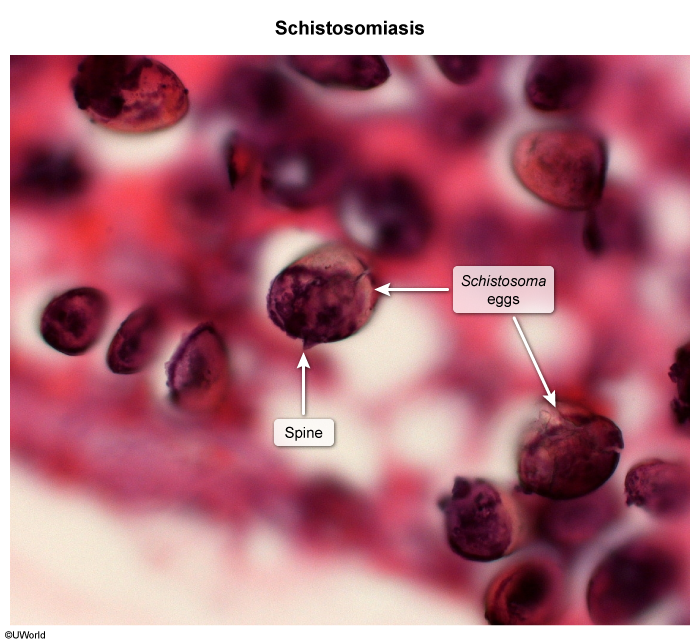Epidemiology
- Occurrence: mainly rural areas with freshwater sources and poor sanitation
Etiology
Pathophysiology
Clinical features
- Local reaction (swimmer’s itch or cercarial dermatitis): pruritic maculopapular rash at the point of entry of cercaria into human skin
- Acute schistosomiasis syndrome (Katayama fever)
- Serum sickness-like disease: immune complex formation of antigens released from eggs and/or adult worms with host antibodies
- Incubation period: 3–8 weeks
- Clinical features: fever, fatigue, cough
- Chronic schistosomiasis: Deposition of eggs leads to chronic inflammation and granuloma formation.
Subtypes
- Genitourinary schistosomiasis
- S. haematobium
- Hematuria, dysuria
- Complications (especially with chronic infection)
- Squamous cell carcinoma of the bladder (may cause painless hematuria), unlike the standard Transitional Cell Carcinoma
- Rare tumor (approximately only 2% of bladder malignancies are squamous cell carcinomas)
- Hepatosplenic schistosomiasis
- Children and adolescents: hepatosplenomegaly
- Adults with chronic infection: periportal fibrosis and portal hypertension
- Pulmonary schistosomiasis
Diagnostics
- Microscopic examination of stool or urine for eggs

- S. mansoni: Eggs have a prominent lateral spine.
- S. haematobium: Eggs have a prominent terminal spine.
- S. japonicum: Eggs have a miniscule lateral spine.
Treatment
- Acute schistosomiasis syndrome
- Administer glucocorticoids to reduce inflammation.
- Administer praziquantel once inflammation improves.
- Chronic schistosomiasis: Administer praziquantel.
